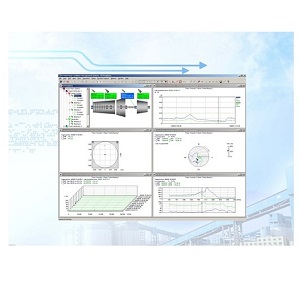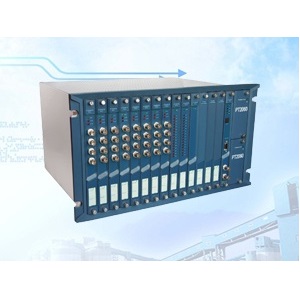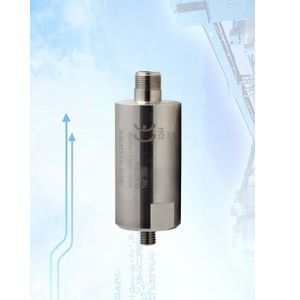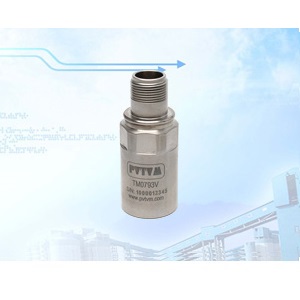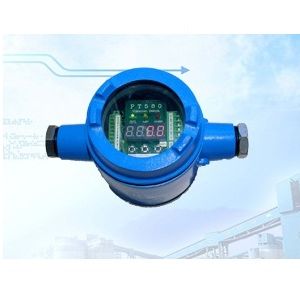Vibration Monitoring Systems
Introduction:
At BlissFlow Systems, we specialize in supplying high-performance Vibration Monitoring Systemstailored for industrial engineering applications. Serving clients across India, Singapore, Malaysia, Indonesia, UAE, and Saudi Arabiaour product line is engineered for precision, durability, and reliability.
To measure and analyze the vibration levels of machinery, helping to identify potential problems and maintain equipment health. These systems are crucial for implementing predictive maintenance, which helps prevent downtime and costly repairs by detecting issues early.
How Does a Vibration Monitoring System Work?
Vibration monitoring systems work by using a method known as vibration trend analysis. Vibration trend analysis is a process that monitors for irregularities in the vibration signature of a machine. When the vibration amplitude goes up or down significantly, under steady state conditions, it is usually an indication that something is changing inside the machine. The overall amplitude is the main indication of a machine malfunction and is perfectly suited for a 4-20 mA output to a Control System (PLC, SCADA, RTU, etc.). The overall amplitude includes the various individual frequency and amplitudes generated by the machine components, its rotation or reciprocating motion, and or process issues. Some monitoring systems record vibration waveforms and identify potential machine issues by revealing.
What are the testing involved in Vibration Transmitter?
Testing of vibration transmitters involves several key steps to ensure their accuracy, reliability, and performance. Calibration tests verify the transmitter’s output against known vibration levels, ensuring accuracy and linearity. Frequency response tests evaluate the transmitter’s response to different frequencies, checking for any resonance or attenuation issues. Sensitivity tests measure the transmitter’s ability to detect small changes in vibration levels. Environmental tests expose the transmitter to various conditions like temperature and humidity, verifying its performance under different scenarios. Durability tests simulate real-world operating conditions to ensure the transmitter’s robustness. Additionally, signal output tests verify the quality and format of the output signal, and EMI/EMC tests evaluate the transmitter’s electromagnetic compatibility. By conducting these tests, manufacturers can ensure that vibration transmitters provide accurate and reliable measurements for predictive maintenance and condition monitoring applications.
Why use a vibration switch?
Vibration switches are primarily used for protecting critical machinery from costly, destructive failure by initiating an alarm or shutdown when excessive vibration of the machinery is detected. Conversely, a vibration switch can be utilized to warn when there is an absence of vibration, such as when a conveyor ceases to function due to a broken drive belt.A vibration switch is used to monitor and detect abnormal vibrations in machinery or equipment, helping prevent damage, reduce downtime, and improve safety. By triggering alarms or shutdowns when excessive vibrations are detected, it enables early intervention and scheduled maintenance, ultimately protecting critical equipment and ensuring smooth operation in various industries.
Our Vibration Monitoring SystemsRange Includes:
- Condition Monitoring Is a predictive maintenance approach that involves tracking and assessing the performance of machinery and equipment in real-time to identify deviations from normal operating conditions.
- Vibration Monitor: It typically includes sensors (like accelerometers) to detect vibrations, signal conditioning equipment to process the data, and a recording system to store and analyze the information.
- Vibration Transmitter: A vibration transmitter is a device that converts input data from a vibration sensor into a standardized signal, often a 4-20 mA current loop, for transmission to a control system.
- Vibration Sensor: These sensors can be piezoelectric, using the piezoelectric effect to convert mechanical vibrations into electrical charges, or accelerometers, which measure the rate of change of velocity or acceleration.
- VibrationSwitch: The vibration switch can sense vibration due to faults such as imbalance, misalignment, looseness, worn bearings, cracked gears, or lack of lubrication.
Why Choose Bliss Flow Systems?
- Regional Expertise: Trusted engineering supplier across India, Singapore, Malaysia, Indonesia, UAE, and Saudi Arabia.
- Certified Quality: All products comply with international safety and performance standards.
- Industrial Compatibility: Designed for oil & gas, chemical, water treatment, and power industries.
- Timely Delivery & Support: Pan-Asia logistics and expert technical support.
FAQs:
- What industries use Vibration Monitoring SystemsfromBliss Flow Systems?
A. Our equipment’s are ideal for oil &gas, chemical processing, food processing, pulp and paper, textile, power generation, and petroleum refining. - Can I get customized Vibration Monitoring Systems?
A. Yes, we offer custom configurations based on your operational requirements and industry standards.
- What are Brand/OEM do you represent?
A.We supply the Reputed Brand of PVTVM(Provibtech), in India, Singapore, Malaysia, Indonesia, UAE, and Saudi Arabia.
Looking for Vibration Monitoring Systemsin India, Singapore, Malaysia, Indonesia, UAE and Saudi Arabia? Contact BlissFlow Systems today for expert guidance and premium solutions.
📞Request a Quote | 📩sales@blissflowsystems.com

